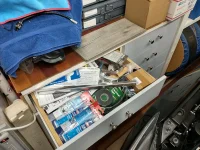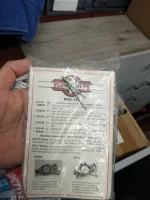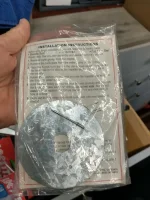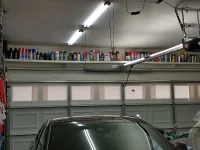Cavitation was an issue in the 70's and 80's with predominantly American V-8 motors capable of turning up to and past 8000rpm. So a few companies used special water pump impellers and larger volume casting or you could convert to an electric driven water pump to cure the problem. Also slowing down the water pump impellers with larger diameter pulleys helped.
*One of the DIY fixes was to attach a plate on the impeller.
The newer engineered block and heads pretty much have illuminated cavitation. There has been some forums with members talking about this happening but when you read all the info at everything posted it is not the cavitation that is the cooling control issue but other factors. I did also read here and there some factory performance model vehicles with high horsepower V-8 engines mention cavitation in the cooling system but these reports are also engines that are running at the extreme engine speeds and some for a length of time. On a street driven engine I fail to see the problem and big concerns but it makes for a good thread conversation?
REDUCTION PULLEYS on mechanical water pumps and pulley driven alternators DO NOT INCREASE HORSEPOWER OR TORQUE.
*Here is a part that was often used to correct people that suspected cavitation. This NIB part is likely older then some member have had their drivers license. I had to dig in my junk draw to find it. LOL
*One of the DIY fixes was to attach a plate on the impeller.
The newer engineered block and heads pretty much have illuminated cavitation. There has been some forums with members talking about this happening but when you read all the info at everything posted it is not the cavitation that is the cooling control issue but other factors. I did also read here and there some factory performance model vehicles with high horsepower V-8 engines mention cavitation in the cooling system but these reports are also engines that are running at the extreme engine speeds and some for a length of time. On a street driven engine I fail to see the problem and big concerns but it makes for a good thread conversation?
REDUCTION PULLEYS on mechanical water pumps and pulley driven alternators DO NOT INCREASE HORSEPOWER OR TORQUE.
*Here is a part that was often used to correct people that suspected cavitation. This NIB part is likely older then some member have had their drivers license. I had to dig in my junk draw to find it. LOL






